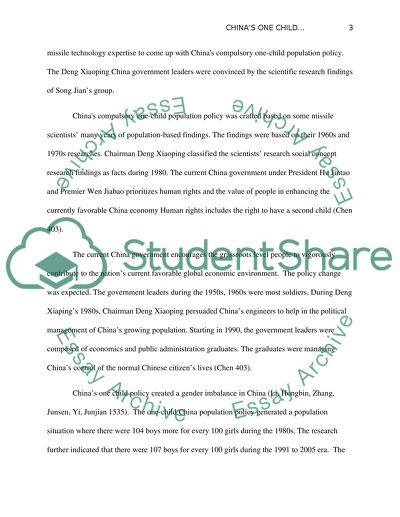Cite this document
(“Chinas One Child Policy Research Paper Example | Topics and Well Written Essays - 1500 words”, n.d.)
Retrieved from https://studentshare.org/politics/1472034-china-s-one-child-policy
Retrieved from https://studentshare.org/politics/1472034-china-s-one-child-policy
(Chinas One Child Policy Research Paper Example | Topics and Well Written Essays - 1500 Words)
https://studentshare.org/politics/1472034-china-s-one-child-policy.
https://studentshare.org/politics/1472034-china-s-one-child-policy.
“Chinas One Child Policy Research Paper Example | Topics and Well Written Essays - 1500 Words”, n.d. https://studentshare.org/politics/1472034-china-s-one-child-policy.


